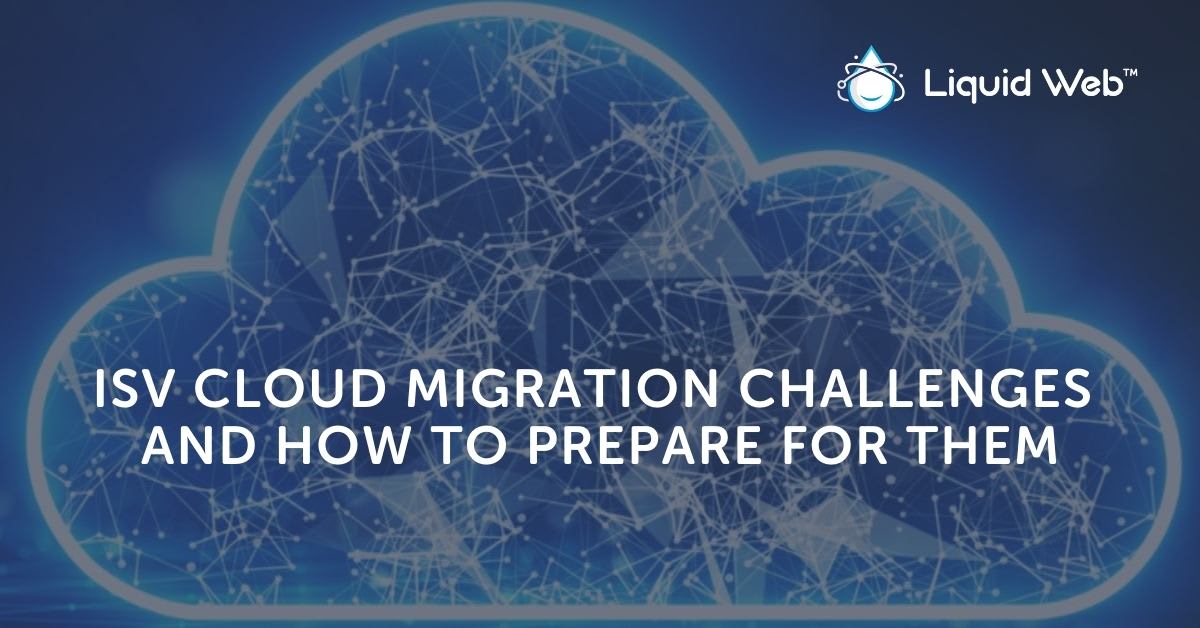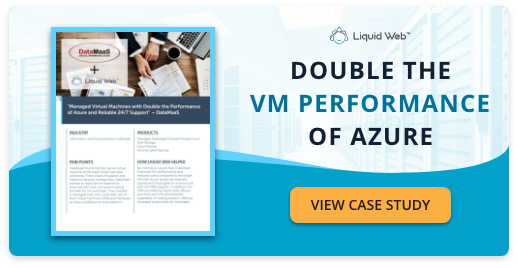
Moving to the cloud can help you deploy faster, reduce costs, and scale your business. The key to a successful migration lies in your preparation. You need to be aware of the challenges independent software vendors (ISVs) face when migrating their app or software to the cloud.
In this guide, we’ll cover the top benefits of cloud hosting along with the five major ISV challenges you may face and how to overcome those challenges.
5 Benefits of Moving to the Cloud
The term cloud migration refers to moving your operations to a cloud environment instead of traditional on-premises servers. You can migrate from traditional servers to the cloud or from one cloud to another.
Here are the top benefits you receive when you transition from a traditional hosting setup to a cloud environment:
1. Reduced IT Costs
Using cloud services to run your ISV business eliminates the costs associated with an on-premises setup.
Large established software companies can afford the upfront costs and ongoing maintenance of their servers, but that overhead can easily cripple small to medium niche providers.
When you switch to the cloud, all of the maintenance responsibility transfers to your Infrastructure-as-a-Service (IaaS) hosting provider, and you just pay for the use of the servers.
At Liquid Web, we offer lock-in monthly pricing that keeps your cloud hosting costs manageable and predictable.
2. Faster Deployment
Moving to the cloud lets you deploy faster, in hours instead of weeks or months. With access to more innovative cloud infrastructure, you can boost your operational efficiency and speed up your go-to-market strategy.
You can also address issues and patch bugs in real-time and improve your user experience. Or, with a managed provider like Liquid Web, you will receive patching assistance as part of your customer service.
3. Grow Your Business with SaaS
According to Gartner, the Software-as-a-Service (SaaS) industry is worth around $172 billion. Since SaaS products have lower up-front user costs, they’re growing in popularity among businesses of all sizes.
Offering SaaS products over the cloud is an excellent way for companies to bring in new leads and create recurring revenue streams.
4. More Scalability and Flexibility
Using a cloud host also gives you access to a wider range of network setups and scales your infrastructure with the click of a button. You can adapt your environment to new business challenges without rebuilding your IT infrastructure.
Cloud hosting is built to adapt to an agile business and marketing strategy. You only pay for certain services when you need them. So if you have to make a strategic pivot, you don’t need to worry about what to do with your legacy setup.
5. Added Backups
Cloud hosting providers offer several types of data backups ranging from on-server to disaster recovery. This helps prevent total loss if hackers compromise your system.
With backups in place, you can deploy a copy of your server right away and avoid long downtimes that affect your visitors. Liquid Web offers Acronis Cyber Backups that include full-server backups, malware protection, and backup encryption without taking up valuable space on your server.
5 ISV Cloud Migration Challenges

While cloud hosting offers many business benefits, taking that first step off-premises always seems the hardest. And moving to a cloud environment can indeed become time-consuming and complicated if you don’t have a roadmap of where you’re going.
Here are the top five challenges you should know when moving your ISV to the cloud.
1. Long Migration Times
If you don’t take the time to know the scope of your migration initially, you can end up dealing with issues that drag your migration out for months. Based on your current infrastructure, it will become clear whether a traditional data migration or lift and shift migration is right for your ISV business.
You can then create a migration plan that outlines everything you already have, what you’re taking and where, and how to deal with the unneeded assets. Using a roadmap for your migration can help you better estimate how long the process will take.
2. Downtime
Anytime you move lots of data, you increase your risk of experiencing network outages. If your network goes down, your business suffers. At the least, an outage will interrupt the customer experience, and in extreme cases, it can lead to the loss of sensitive data.
You can lower your risk of downtime by creating a temporary environment you can run during the migration to avoid service interruptions. However, there’s no way to mitigate risks 100 percent, so make sure you communicate potential usage limits or downtime to your stakeholders.
You can also minimize the impact on your team and customer base by migrating data during off-peak hours — when you have fewer people using the servers.
3. Lack of Interoperability
One issue you may experience when migrating to the cloud is a lack of interoperability between your existing apps and programs and your new cloud environment.
Interoperability refers to the ability of multiple systems to share information. In simple terms, it’s the compatibility between different apps and programs.
You’ll likely have to rewrite your code if you’re using cloud providers like AWS or Google. However, with Liquid Web’s VMware Private Cloud infrastructure, you don’t need to rework your code.
To avoid compatibility issues, you should audit the systems you want to migrate before selecting your hosting provider. Make sure your new hosting service offers all the infrastructure elements you need to maintain the functionality of your apps.
4. Security Weaknesses
Cloud providers offer several security advantages such as out-of-the-box encryption and segmented workstations that improve your data integrity. But that doesn’t mean you don’t experience any security risks.
When you transition to a new ecosystem, you might be at higher risk for security breaches simply because you don’t know as much about cloud-specific risks.
Choosing a private cloud server over a public cloud solution can also lower your risk of attack because only your company has access to the infrastructure. Isolation gives you more control over security and compliance.
5. Adapting Your In-House Team
Migrating to the cloud isn’t just an IT change. It can affect your entire operations. In other words, what worked with on-premises hosting won’t necessarily be the best way to operate in a cloud environment.
Before your migration, ask yourself, “Does my development team have the skills and resources to work effectively in a cloud environment?”
If not, you may need to provide additional training or consider allocating more resources for staffing. For help with adapting your team, look for a provider that offers a comprehensive knowledge base and other learning materials your team can use.
Final Thoughts: ISV Challenges Specific to the Cloud Migration Process
Moving your workloads and applications to the cloud can give you the resources and the flexibility you need to continue growing your ISV business. That’s not to say that cloud migrations are always seamless. Without preparation, migrating your data can cost you much more time than you first anticipated.
The good news is that you can avoid many migration pitfalls by planning ahead, being aware of the specific challenges ISVs face when migrating to the cloud, and partnering with a knowledgeable cloud provider such as Liquid Web.
[ad_2]
Source link







